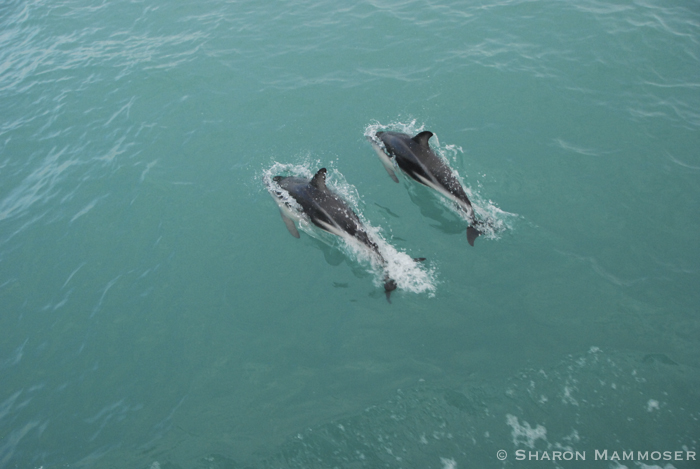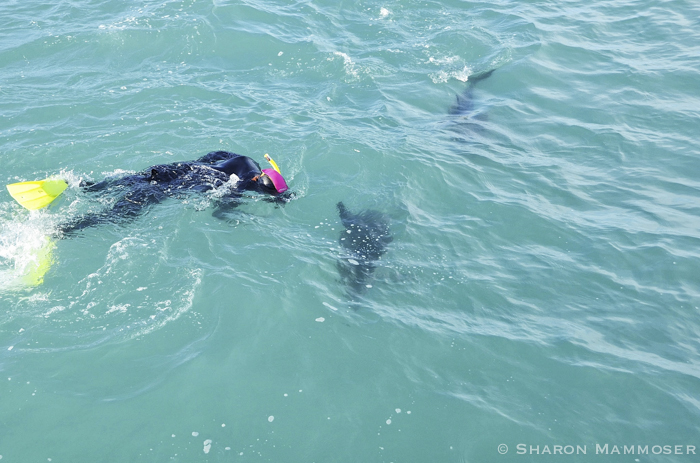As you likely know or have noticed, I tend to do posts about animals that can be found in my backyard. I enjoy photographing animals of all kinds from tiny insects and spiders, to larger animals like bear and deer. I feel strongly that people should have a general knowledge of animals they may encounter as they go about their days.
But of course, sticking only to animals I might find in western North Carolina means a lot of very interesting animals will be excluded, including hundreds of animals that live in the oceans or of course in other parts of the world.
A long-time reader (thanks Bill!) recently suggested some other animals, listing a few, including dolphins. So that got me doing research and learning about this marine mammal. What I learned was fascinating!
So here are 10 things you may not know about dolphins:

1.Dolphins ARE mammals, though sometimes, people would have you believe otherwise…. for instance in the NFL, if a team is playing against the Miami Dolphins, they might yell something like “squish the fish!” But when was the last time you saw a hairy dolphin? HAVE you ever seen a hairy dolphin? Likely not. But doesn’t that make you wonder as surely you know a characteristic of mammals is that they have fur or hair, right? Well interestingly, when a dolphin is first born, it does have hair! Just a bit and just above its mouth. In about two weeks it will lose its hair and be hairless for the rest of its life.
2. There are 40 species of dolphins in the world, with most of them living in the ocean, but several species do live in river. The bottlenose dolphin is the most common. The smallest dolphin is Maui’s Dolphin which is 4 feet long and weighs about 90 pounds. The largest is the Orca, or killer whale as it is sometimes called, which can be 25 feet long and weigh a whopping 19,000 pounds.
3. Did you ever wonder how a dolphin doesn’t drown when it’s sleeping? (Or along those lines, how does a bat not fall when it’s sleeping?) Interestingly, when a dolphin is sleeping, only half of its brain goes to sleep so the other half can continue to breathe.

4. Know what bats and dolphins have in common besides both being mammals? Well both navigate with echolocation. Have you ever been swimming in the ocean and not been able to see very well? Visibility can be limited sometimes, especially down deeper or on cloudy days, so dolphins (and whales and porpoises) have evolved to “see” with their ears, just the way bats can “see” in complete darkness with their ears. By sending out sonar, they are able to get a visual image of the space around them. The sounds come back after bouncing off of objects are picked up by their lower jaw and giant foreheads. These areas channel sounds to their brain where they can be interpreted.
5. In my humble opinion, this is the coolest fact I learned about dolphins: They are altruistic and have been observed helping other animals in need, including other species. Below is a video about this happening in New Zealand.
6. Dolphins are highly intelligent animals, very playful and have excellent eyesight and hearing. Adults sometimes teach their calves how to use tools and sometimes you can see dolphins playing in the wake of boats. Ever swim with a wild dolphin? I did in New Zealand and have to say, wow, what an experience! Dolphins are super curious –me and the other swimmers got in the water and starting singing… dolphins came to investigate (have to wonder if were they thinking, “wow, that’s one BAD singer!) They then might stay a few minutes, following my lead as I spun left or spun right, spinning right along with me. It was one of the greatest wildlife encounters I have ever had! (I you want, you can read more about that HERE.)

7. Dolphins are carnivores, feeding on fish, squid and crustaceans. Interestingly, they HAVE teeth — depending on the species, they have between 8-250–but they don’t use them like we do. Unlike humans, dolphins do not use their teeth for chewing their food, just for catching it. They swallow their prey whole.

8. Dolphins are long lived animals. Bottlenose dolphins can live more than 40 years while orcas can live 70-80 years. The average lifespan of a dolphin is 12-20 years.
9. Dolphins live in pods with many other dolphins, from 5 to 100 individuals. When a female is ready to give birth, she goes away from the pod to have her calf. The first thing she needs to one once it’s born is help it to the surface so it can take its first breath. Mother dolphins nurse their calves from 11 months to 2 years. And the young ones will stay with mom until they are between 3-8 years old.
10. Dolphins make a variety of sounds to communicate with each other, from clicks to whistles and other noises in between. Each dolphin has a “signature ” whistle so others can recognize individuals in their pods.
Amazing, right? I did not know all of this stuff about dolphins! Do you live where you get to see dolphins regularly? Have you shared the experience of swimming with a wild dolphin? As always, I would love to hear from you!

